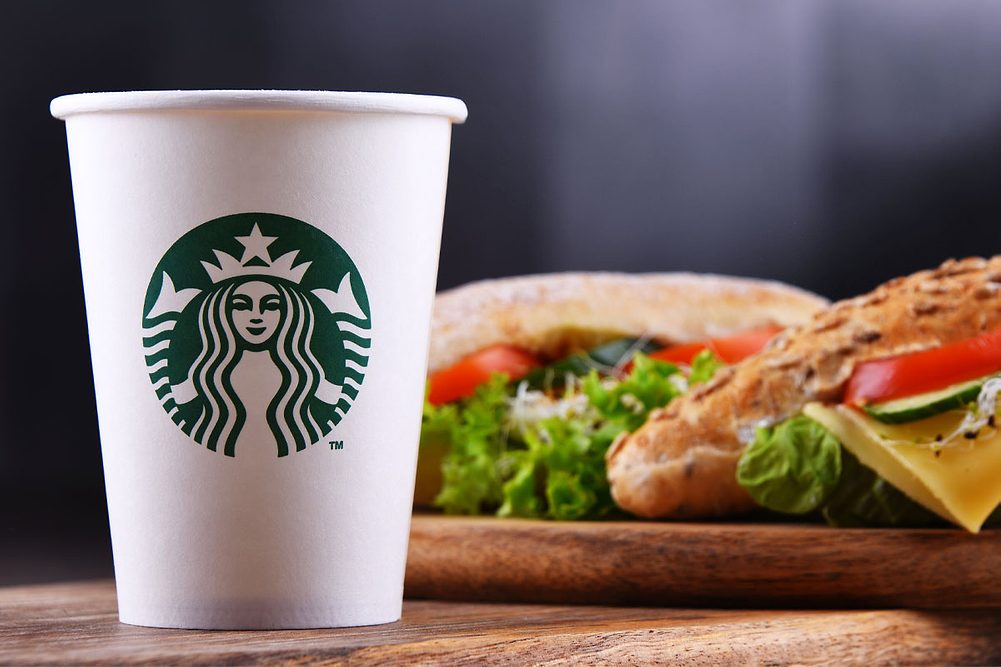SEATTLE — Despite mixed results that saw a recovery in China that helped boost profit but a traffic slowdown in the United States that held back revenues, executives at Starbucks found a silver lining in five key priority areas that delivered momentum in the third quarter.
First, Starbucks’ efforts to elevate the brand by running great stores came to life during the quarter through strengthened execution in North America, said Laxman Narasimhan, chief executive officer.
“Our North America team delivered record revenue in the quarter, with a growth of 11% underpinned by 7% comparable same-store sales growth, leading to the highest average weekly sales in our history,” Mr. Narasimhan said. “Our ticket growth was driven by pricing, customization and food attach. Additionally, we continue to see improvements in items sold per labor hour. Operationally, we are seeing evidence that we are executing better. Barista attrition, where we are already industry-leading, has improved further by 11% year-over-year.”
Mr. Narasimhan said the company’s cold business reached 75% of US beverage sales during the third quarter, while food also helped fuel growth.
“This past quarter, we saw all-time high food attach and sales of breakfast sandwiches,” he said. “As an attached business, food drove a higher ticket in the quarter, improving volume growth and contributing to the record average weekly sales. Overall, we are excited about the significant opportunity in food as we explore new, elevated and convenient food offerings.”
Starbucks’ second priority involves strengthening and differentiating its position in digital. During the quarter the company expanded its 90-day active Starbucks Rewards customers by more than 25%, to nearly 75 million globally.
Third, Starbucks is focused on global growth, an area the company said has a “limitless” runway.
Mr. Narasimhan said Starbucks experienced double-digit top-line growth across the international segment, buoyed in large part to a rebound in China, where revenues were up 51% year-over-year. He said Starbucks plans to opens its Coffee Innovation Park — the company’s single largest and most sustainable manufacturing investment outside of the United States — in Kunshan, China, later this fall.
“This next-generation facility with state-of-the-art supply chain operations will also include a unique customer immersion center,” he said.
Starbucks’ fourth strategic priority is fueling productivity. Mr. Narasimhan said the company has broadened the areas beyond its initial reinvention plan to include its end-to-end supply chain, direct and indirect procurement, how it designs and build stores as well as opportunities across technology and supporting processes.
Finally, Starbucks is prioritizing reinvigorating its culture of human connection.
“We will continue to invest in the overall partner experience through compensation and benefits as well as through in-store improvements,” Mr. Narasimhan said. “At Starbucks, we strive to be a different kind of company, but we do recognize that we are operating in a different kind of world. It is through that lens we have spent the last several months rolling out a new unifying mission for the company, new promises for all our stakeholders and soon, a new set of values that will reground the culture of Starbucks in our heritage and a more modernized workplace.”
Net earnings attributable to Starbucks in the third quarter ended July 2 was $1.14 billion, equal to 99¢ per share on the common stock, up 25% from $912.9 million, or 79¢ per share, in the prior-year period.
Net revenues totaled $9.17 billion, up 12% from $8.2 billion in the year-ago quarter.
Global comparable store sales increased 10%, reflecting a 5% increase in comparable transactions and a 4% increase in average ticket.
North America segment operating income increased 10% to $1.46 billion from $1.33 billion, while operating margin fell back slightly due to investments in labor, partially offset by strategic pricing, productivity improvement and sales leverage.
Net revenues in the North America segment grew 11% to $6.74 billion from $6.1 billion. North America comparable store sales grew 7%, which reflected a 6% increase in average ticket and a 1% increase in comparable transactions.
“Our customers have relatively adopted the practice of customizing their beverages, allowing for a more personalized and differentiated experience while contributing to a growing higher-margin ticket with abundant opportunity ahead,” said Rachel Ruggeri, chief financial officer. “In Q3, over 60% of beverages were customized, representing a 9% growth when compared to just five years ago. Cold foam, for example, continues to be a customization favorite. This quarter's all-time high food attach was driven by two of every five customers attaching food with their orders, up over 25% from just five years ago, driven by our delicious breakfast sandwiches leading to an all-time high ticket in the quarter.”
International operating income surged 177% to $374.5 million from $135.3 million. Net revenues for the International segment increased 24% to $1.97 billion, primarily driven by a 24% increase in comparable store sales, net new company-operated store growth of 11% over the past 12 months, and growth in licensed store revenue, including higher product sales and royalty revenues.
Channel Development segment operating income rose 9% to $208 million from $191.7 million. The segment’s net revenues, though, fell 6% to $448.8 million from $479.7 million, reflecting a decline in revenue in the Global Coffee Alliance.





